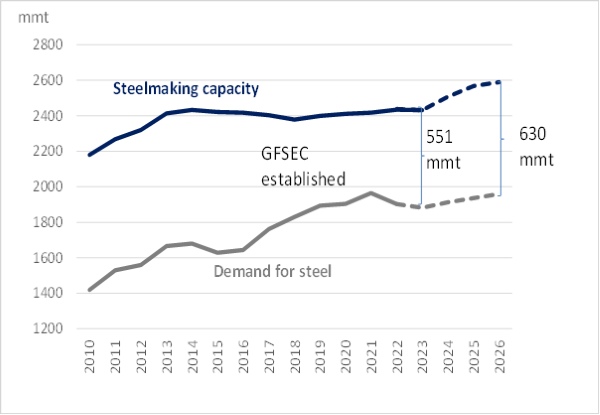At the beginning of the SteelOrbis Fall 2024 Conference & 91st IREPAS meeting held in Paris on September 15-17, Luciano Giua, economist and policy analyst at the Organization for Economic and Cooperation and Development (OECD), explained why steel is so important in the worldwide economic scenario.
Since it is a widely used material in the metal industry and in construction, not to mention national defense and security, it is fundamental in the employment of a very high number of people. Mr. Giua noted, adding that this is why governments place such importance on steel and why the industry is particularly vulnerable to protectionist policies. On the negative side, he said, many steel firms that receive subsidies are inefficient and subject to overproduction and they have a very strong impact on emissions.
The OECD coordinates three bodies dedicated to addressing global market steel issues: the Global Forum on Steel Excess Capacity (GFSEC), the OECD Steel Committee, and the Climate Club. The gap between global steelmaking capacity and global steel demand is growing rapidly, Mr. Giua pointed out, stating that the gap amounted to 551 million mt in 2023 and that the forecast for 2024-26 is about 630 million mt.
Steel demand in Europe, he said, decreased last year, still affected by the ongoing repercussions of the Russian aggression against Ukraine, higher energy costs and trade issues, while on a worldwide level the decrease was 1.1 percent in 2023, but the forecast is that the steel demand will grow by 1.7 percent in 2024 and by 1.2 percent in 2025.
Mr. Giua noted that a significant factor contributing to this phenomenon is the support provided to China's steelmakers through substantial government subsidies, particularly during periods of profit decline. State-owned enterprises (SOEs), in particular, tend to receive more subsidies per asset compared to private enterprises (POEs).
The main party responsible for this phenomenon, Mr. Guia noted, is China as the country’s steelmakers are receiving a lot of government subsidies, especially during periods of profit decline, while Chinese state-owned enterprises (SOEs) in particular receive more subsidies per asset compared to Chinese private enterprises (POEs).
The question is, Giua said, are we facing a new global steel crisis? Compared to 2014/2015, the global context is changing, he stated, with excess capacity happening in an uncertain economic and geopolitical scenario, where BOF-based capacities are growing faster than EAF-based capacities in some regions. He concluded by stating that the GFSEC and the Steel Committee are working with member countries and stakeholders to implement strategies to reduce excess capacity, which would smooth out trade relations, reduce friction among steel trading partners, and contribute to a more cooperative and prosperous global steel market.